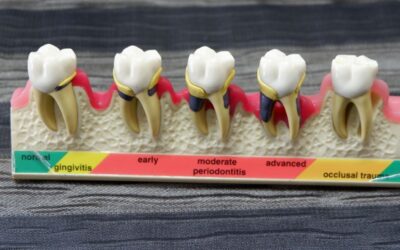Intravenous (IV) sedation is one of the most effective and commonly used methods for calming patients during medical or dental procedures. The main advantage of IV sedation is that it works quickly, allowing healthcare providers to administer the right amount of sedative and maintain a controlled, safe level of sedation throughout the procedure. But how long does it take for IV sedation to kick in? This is a common question that many patients ask before undergoing sedation.
The truth is, the time it takes for IV sedation to take effect can vary depending on several factors. In this guide, we’ll explore what IV sedation is, how it works, the factors influencing how quickly it takes effect, and what you can expect during and after the procedure. Whether you’re about to undergo a dental cleaning, wisdom tooth extraction, or a more invasive surgery, understanding the sedative process can help you feel more at ease.
What Is IV Sedation and How Does It Work?
Overview of IV Sedation
IV sedation involves administering sedative drugs directly into the bloodstream through a vein, typically in your arm or hand. This method ensures the sedative acts quickly because it bypasses the digestive system and goes straight into the bloodstream. Unlike oral medications, which need to be digested and metabolized before they can take effect, IV sedation provides near-instantaneous relief.
IV sedation is used in a wide range of procedures, from minor dental work to major surgeries. The primary purpose is to help patients relax, alleviate anxiety, and make the procedure more comfortable. In some cases, the goal is to keep the patient awake but calm, while in others, it might induce a deep sleep-like state, allowing the surgeon or dentist to work more efficiently and comfortably.
How IV Sedation Differs from Other Sedation Methods
IV sedation differs significantly from oral sedation and nitrous oxide (laughing gas). Oral sedation, for example, takes longer to take effect because the medication must pass through the digestive system. Nitrous oxide is fast-acting but wears off almost immediately after administration stops. IV sedation, however, offers a controlled level of sedation that can last the entire length of the procedure, ensuring that patients remain calm, comfortable, and unaware of any discomfort.
For dental and medical professionals, IV sedation allows them to manage the level of sedation more precisely, adjusting it as needed during the procedure.
Factors That Affect the Onset of IV Sedation
There are several key factors that can influence how quickly IV sedation begins to take effect. These factors include the type of sedative used, the patient’s body weight and metabolism, any pre-existing health conditions, and the speed at which the drug is administered.
Type of Sedative Used
Not all sedatives are created equal. The specific sedative administered during your procedure plays a significant role in how fast it takes effect. Some commonly used sedatives include:
-
Midazolam: A fast-acting sedative that is commonly used for dental procedures and other minor surgeries. It usually takes effect within 1-3 minutes after injection.
-
Propofol: Known for its rapid onset, propofol is often used for more invasive surgeries. Its effects are felt within minutes.
-
Diazepam (Valium): This sedative is used for longer procedures, and while it still works quickly, its effects might be slightly more gradual compared to others.
The exact time it takes for sedation to kick in depends on the drug used. Some sedatives start working within seconds, while others may take a few minutes.
Patient’s Weight and Metabolism
Your body weight and metabolism can significantly influence how quickly the sedative reaches its peak effect. Individuals with a higher body fat percentage may experience a slower onset of sedation since fat cells can store the sedative for longer periods. Conversely, individuals with a higher muscle mass or faster metabolism may feel the effects sooner.
Pre-Existing Health Conditions
Certain health conditions can slow down or speed up the process of how the body absorbs and metabolizes IV sedatives. Liver or kidney issues, for example, may delay the breakdown of sedatives, causing the drug to take longer to take effect. Other conditions, like obesity or diabetes, may affect how the sedative is absorbed into the bloodstream.
Dosage and Administration Speed
The dosage and the speed at which the sedative is administered can also impact the onset time. If a higher dose is given, or the sedative is delivered more rapidly, patients may feel the effects quicker. However, if the dosage is lower or the sedative is delivered slowly, it may take longer to feel the effects.
General Timeframe for IV Sedation to Kick In
For most patients, IV sedation takes effect within 1 to 3 minutes. This makes it a preferred choice for those needing quick and effective sedation. You’ll typically begin to feel the effects almost immediately, with the first signs being a sense of relaxation or drowsiness.
While the onset is rapid, the duration of sedation can vary. For minor procedures, the sedation might wear off after about 30 minutes to an hour. For longer procedures, the effects can last several hours, especially if additional doses are administered throughout the procedure.
What to Expect During and After IV Sedation
Physical Sensations During IV Sedation
Most patients report feeling relaxed and calm once the sedative begins to take effect. Depending on the dosage, the experience can range from feeling drowsy and sleepy to feeling completely unconscious. Some patients also report experiencing a mild euphoria or a sense of detachment, making the procedure feel less intrusive.
The good news is that because IV sedation works so quickly, there is usually very little anxiety before the procedure begins. The sedative takes away the fear of needles or discomfort, allowing you to be more at ease during the treatment.
Duration of Effects
As the sedative wears off, most people start to feel awake and alert within 1-2 hours after the procedure. However, it’s important to note that while you may appear awake, the sedative’s effects may still be lingering. You may feel groggy, dizzy, or somewhat disoriented immediately after the procedure. It’s also common to experience memory gaps, especially if a higher dose was used.
Possible Side Effects
While side effects are rare, some patients may experience:
-
Nausea or Vomiting: Some individuals may feel mildly nauseous after the sedation wears off.
-
Dizziness or Lightheadedness: Due to the effects of the sedative, you may feel unsteady after the procedure.
-
Confusion or Disorientation: The sedative can cause mild confusion, which usually resolves as it leaves your system.
Frequently Asked Questions (FAQs)
1. How long does IV sedation last?
The duration of IV sedation depends on the type of sedative and the length of the procedure. Generally, it lasts between 30 minutes to several hours, with the effects fading as the sedative wears off.
2. Can IV sedation make you forget the procedure?
Yes, many sedatives used in IV sedation cause amnesia, so patients often have little to no memory of the procedure itself. This is one of the reasons it’s preferred for procedures that may cause anxiety.
3. Is IV sedation safe?
IV sedation is safe when administered by a trained professional. It is closely monitored during the procedure, and safety measures are in place to ensure the patient’s health and well-being.
4. Can I drive after IV sedation?
No, you should not drive after receiving IV sedation. The sedative can impair your judgment, reaction time, and coordination, which makes it unsafe to operate a vehicle.
5. How quickly do I recover from IV sedation?
Recovery from IV sedation varies but typically takes between 1-2 hours. Afterward, you may still feel groggy, and it’s important to have someone accompany you home.
6. What should I avoid after IV sedation?
Avoid consuming alcohol, operating heavy machinery, and engaging in strenuous activities for at least 24 hours. Additionally, rest and stay hydrated to help your body recover from the sedation.
Conclusion
IV sedation is a powerful tool used to help patients undergo medical and dental procedures with minimal discomfort. The sedative typically takes effect within 1 to 3 minutes, depending on the type of drug used and other factors such as your body weight, metabolism, and overall health. The fast-acting nature of IV sedation makes it ideal for procedures that require patients to be relaxed and pain-free, yet awake and aware during the process.
While the sedative’s effects are generally safe, always ensure you have a trusted medical professional administering the sedation and monitoring your health throughout the procedure. Post-sedation recovery is typically smooth, but be prepared for a period of grogginess as the sedative wears off. Always follow the aftercare instructions provided by your healthcare provider to ensure a safe and swift recovery.



